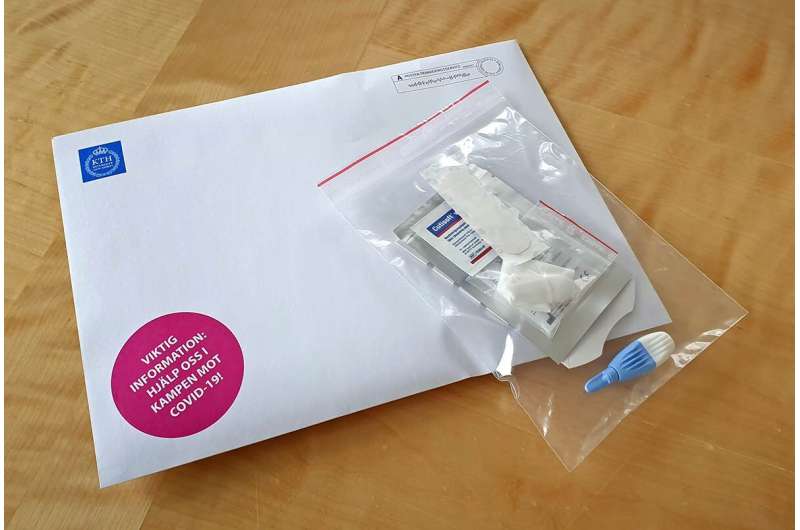1,000 more home sampling kits will be sent to random Stockholm addresses to see how much the coronavirus had spread during April. Credit: KTH The Royal Institute of Technology
By Easter weekend, 10% of Stockholm's population had been infected with the coronavirus, according to anonymous samples collected via post from 1,000 of the city's residents. KTH researchers now will follow up with a second mailing of 1,000 sample collection kits in order to determine the spread over the preceding four weeks.
The results provide a snapshot of the spread of infection Stockholm had accumulated by the end of March. Of 1,000 sample collection kits sent, 550 were returned. Of these, 446 test responses were approved. The average sampling day was April 11, says Niclas Roxhed, associate professor at KTH.
The mailings were evenly distributed to men and women, chosen at random, and ranging in age between 20 and 74, from a population of 1.22 million people in 717,850 households.
"We really need the public's help now," Roxhed says. "Only with as many contributions as possible can we get a true picture of the spread of infection.
"And this allows us to put into practice a way for everyone who needs to be tested to be able to test themselves."
Provided by KTH Royal Institute of Technology























